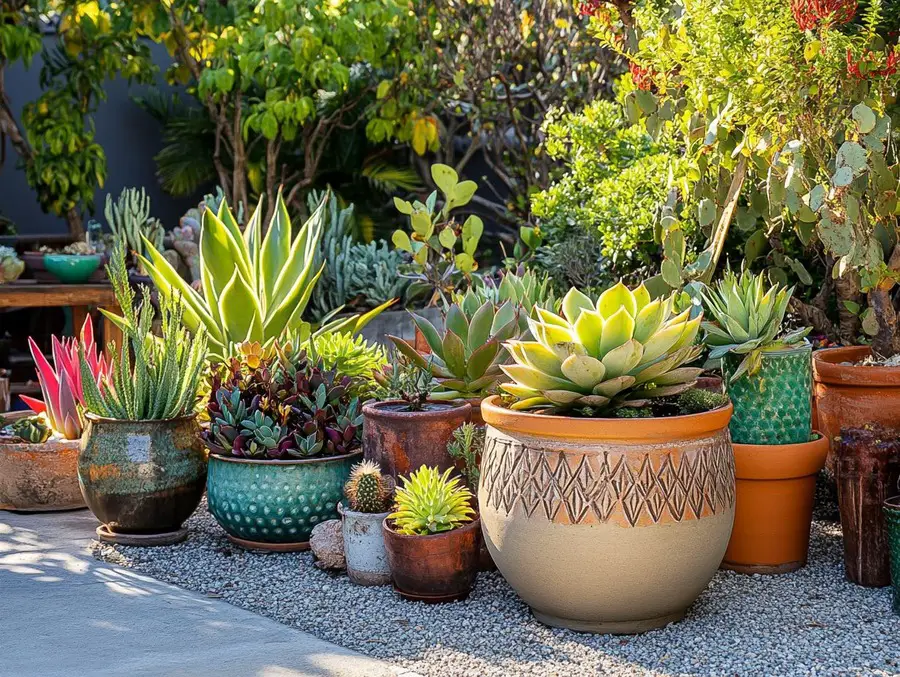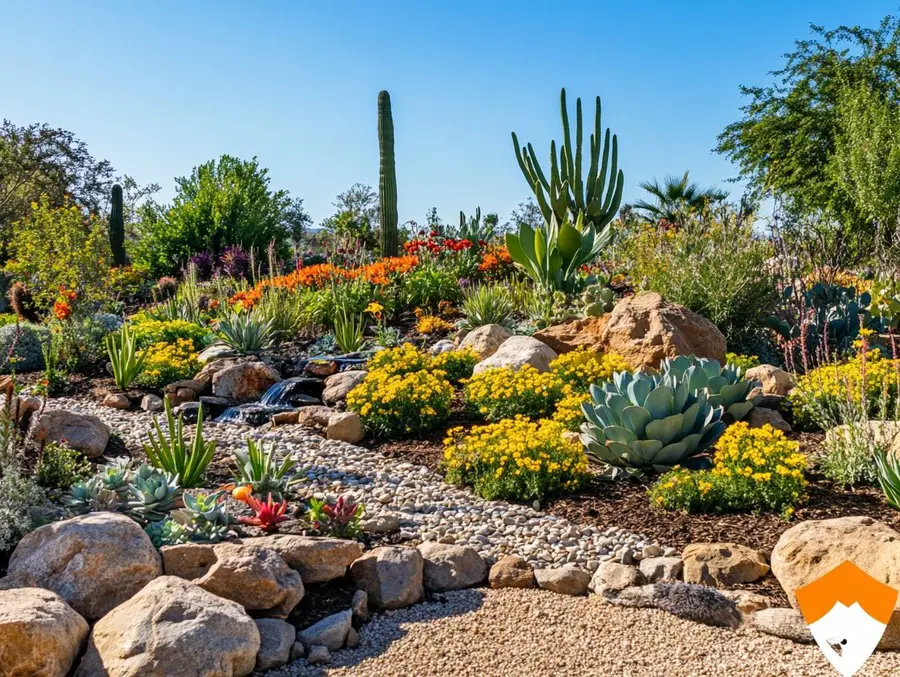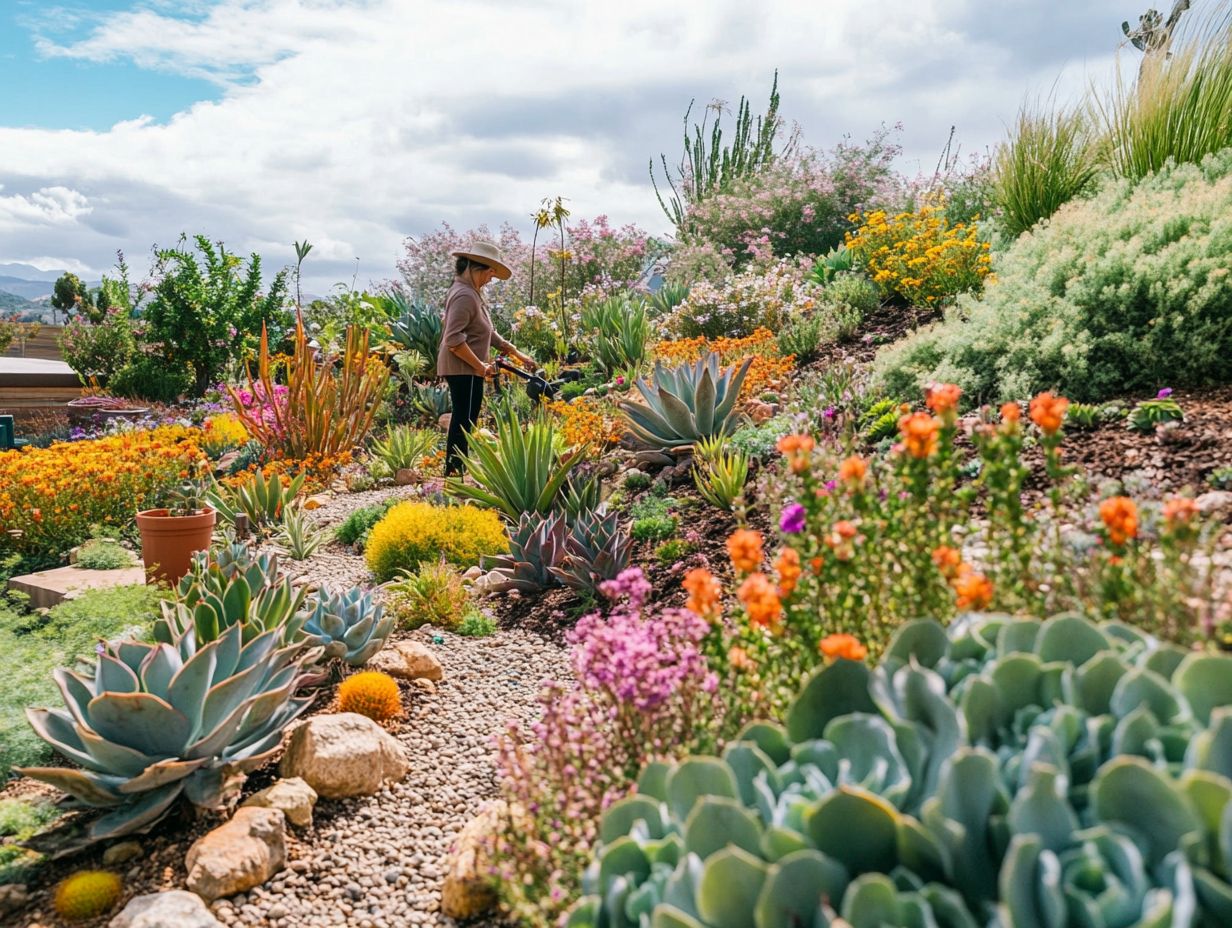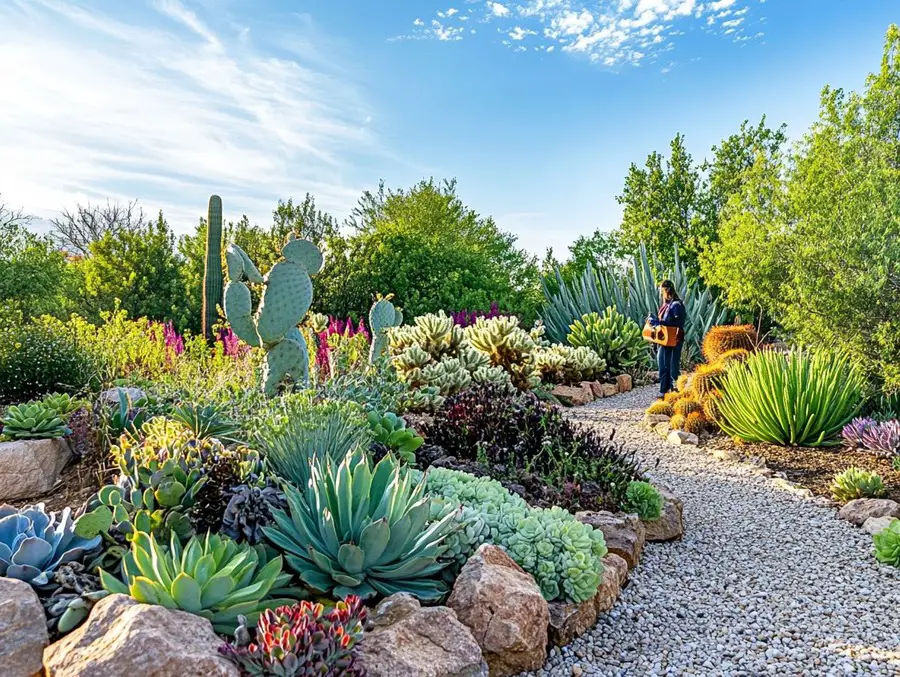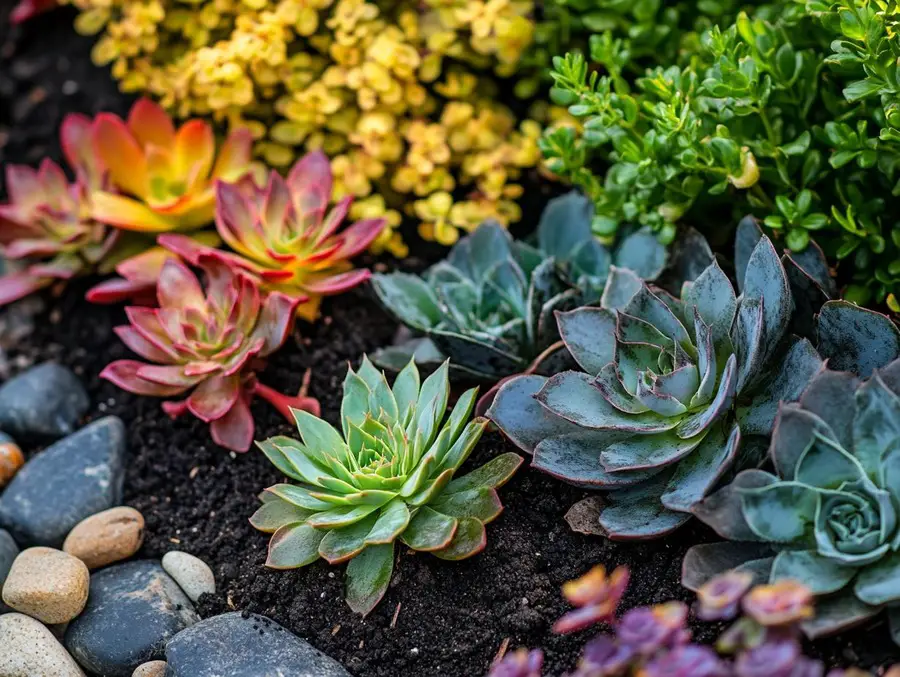We use affiliate links. If you purchase something using one of these links, we may receive compensation or commission.
.jpg)
Discover practical and creative small balcony gardening ideas to transform your compact space into a lush, green retreat. Perfect for urban gardeners!
Small Balcony Gardening Ideas
Key Takeaways:
- Small balcony gardening ideas involve maximizing limited space using vertical gardens, hanging planters, and compact furniture.
- Choose plants suited for balcony conditions, like herbs and small vegetables.
- Use efficient watering techniques to maintain a thriving, attractive balcony garden.
Looking for small balcony gardening ideas? You’re in the right place! Whether you have a tiny space or a larger balcony, this guide is packed with innovative and practical tips to help you create a beautiful, green oasis in the heart of the city.
Let’s turn your balcony into a vibrant and relaxing space!
Small Balcony Gardening Ideas
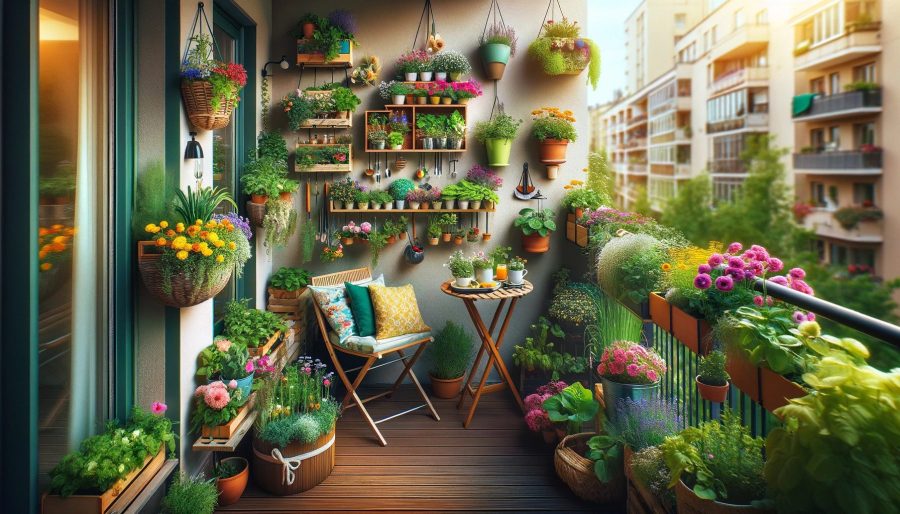
In recent years, the concept of small balcony gardening has gained significant momentum as urban living becomes increasingly prevalent.
With limited outdoor space, many city dwellers are seeking ways to create lush, green oases on their balconies, no matter how small.
This comprehensive guide is designed to provide you with a wealth of small balcony gardening ideas to help you maximize the potential of your limited space.
From understanding the restrictions of your balcony to choosing the right plants and containers, this article will cover it all.
We’ll explore efficient watering techniques, utilizing all surfaces of your balcony, and even creating a living wall vegetable garden.
Key Takeaways:
- Utilize all surfaces of your balcony by using hanging planters, and vertical plant stands, and creating a living wall garden.
- Choose the right plants for your balcony by considering sunlight exposure and weather conditions.
- Maximize space by using efficient watering techniques, choosing the right size planters, and setting up a dedicated spot for oversized planters.
Small Balcony Gardening Ideas: Creating a Lush Oasis in Limited Space
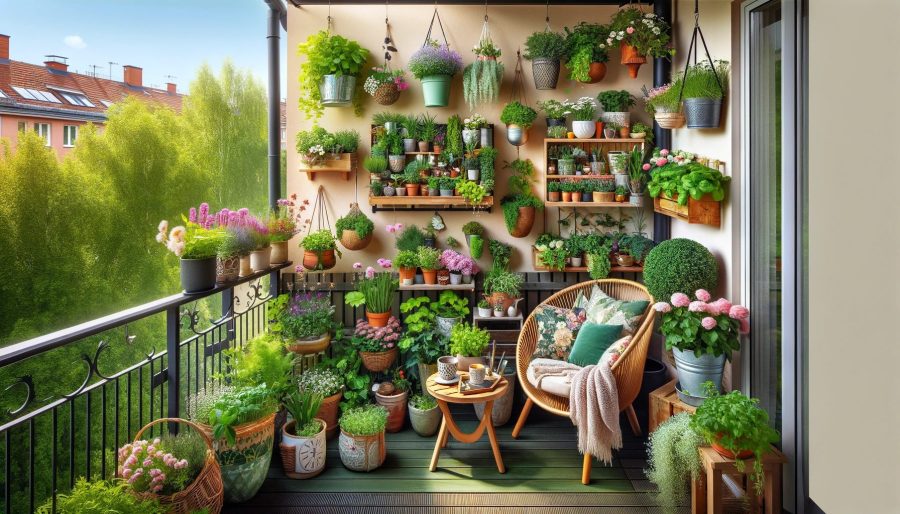
Transforming a small balcony into a green oasis is a delightful endeavor that harnesses the potential of limited space to create an outdoor sanctuary for relaxation and inspiration.
With the right approach, even the smallest balcony can flourish into a vibrant and inviting space that enriches one’s outdoor life.
Small balcony gardening offers an opportunity to connect with nature in an urban setting, providing a tranquil retreat from the hustle and bustle of city life.
To maximize space, utilizing vertical planters, hanging baskets and tiered shelves can add layers of greenery, while compact furniture and multifunctional accessories optimize the area for both gardening and leisure.
We emphasize the importance of selecting the right plants for the balcony’s microclimate and sharing easy-care maintenance tips to overcome potential restrictions.
Maximizing Space on Your Balcony
Maximizing space on a small balcony involves strategic planning and creative utilization of every available inch, ensuring that the outdoor area is optimized for its full potential as a green retreat.
Understanding Your Balcony Garden Restrictions
Understanding the limitations and restrictions of a balcony garden is crucial for making informed decisions about plant selection, container choices, and overall design, ensuring that the outdoor space thrives within its unique environment.
Evaluate light conditions to know what plants to select. Is your balcony sunny or is it shady or a mixture of both?
You should talk to your building manager about weight restrictions and any other limitations before you even start your balcony garden.
Efficient Watering Techniques for Balcony Gardens
 How will you water your garden? Is water readily available or will you need to carry water to your garden? Are you planning to hand water or do you want to automate watering with a drip irrigation system?
How will you water your garden? Is water readily available or will you need to carry water to your garden? Are you planning to hand water or do you want to automate watering with a drip irrigation system?
Implementing efficient watering techniques is essential for the health and vitality of plants in a balcony garden, as the limited space and container environment require careful attention to prevent under or over-watering.
Choosing the Right Plants for Balcony Gardening
Selecting the right plants for balcony gardening involves thoughtful consideration of light requirements, plant heights, growth habits, and the desired arrangement, ensuring a harmonious and visually appealing composition that thrives in the outdoor space.
Optimal Containers for Small Balcony Gardens
Choosing optimal containers is a critical aspect of small balcony gardening, as the right planters not only enhance the aesthetic appeal but also provide the necessary conditions for plant growth, including adequate soil, water retention, and drainage.
Terra cotta and ceramic planters are decorative but they are heavy. Consider using lightweight plastic or resin planters if you have weight restrictions.
Utilizing All Surfaces of Your Balcony
Utilizing all surfaces of a balcony, including walls, railings, and even ceilings, enables the creation of a multi-dimensional garden that maximizes the available space and transforms the outdoor area into a lush and visually captivating environment.
Choosing the Right Size Planters for Limited Space
Selecting the right size planters is pivotal for limited balcony spaces, as appropriately scaled containers contribute to a well-balanced garden arrangement and facilitate efficient space utilization, ensuring that the outdoor area is brimming with greenery without feeling overcrowded.
Many herbs and succulents can be grown in smaller containers but shrubs and plants like tomatoes and peppers will need larger containers. Root vegetables like carrots will require deep containers.
Exploring Different Types of Balcony Gardens
Exploring the different types of balcony gardens, from compact and minimalist designs to lush and vibrant creations, provides inspiration and guidance for tailoring the outdoor space to individual preferences and design aesthetics, transforming the balcony into a personalized green haven.
Some people grow balcony vegetable gardens while others prefer ornamental and flowering plants and some gardeners grow a mix of different plants.
Try to visualize what you want your garden to look like and then select appropriate plants to make it happen.
Utilizing Plant Stands for Vertical Space
Utilizing plant stands for vertical space optimization allows for the creation of multi-level garden displays, effectively maximizing the available area and adding visual interest to the balcony environment, transforming it into a flourishing green sanctuary.
Creating a Living Wall Vegetable Garden
Establishing a living wall vegetable garden on a balcony offers a dynamic and efficient way to grow fresh produce, while also contributing to a visually striking vertical garden display that optimizes space and maximizes the use of the outdoor area.
Use Hanging Planters
Using hanging planters for vertical gardening is an innovative and space-saving approach, especially for those with limited ground space like balcony or small patio gardeners.
Hanging planters elevate plants, creating a lush, green canopy and adding a vertical dimension to your gardening space.
This method is not only aesthetically pleasing but also allows for better air circulation around plants, which can lead to healthier growth.
It’s perfect for growing a variety of plants, from trailing vines to vibrant flowers, and even some vegetables and herbs.
With hanging planters, you transform any small area into a vibrant, green oasis, maximizing your gardening potential and adding a touch of nature to your living space.
Setting Up a Dedicated Spot for Oversized Planters
Allocating a dedicated spot for oversized planters on the balcony allows for the creation of impactful focal points.
It facilitates the integration of larger green elements into the outdoor space while enhancing the overall garden arrangement and design aesthetic.
Even on a small balcony, you should try to create a focal point, a spot the eyes are drawn to first. Larger plants are ideal for this.
Incorporating Tables and Chairs for Larger Balcony Gardens
Incorporating tables and chairs into larger balcony gardens elevates the outdoor space into a functional and inviting extension of the living environment, creating a harmonious ‘fifth room’ that fosters relaxation, socialization, and appreciation of the natural surroundings.
Transforming Your Balcony into a Fifth Room
Transforming a balcony into a ‘fifth room’ extends the living space into the outdoors, creating a seamless transition between indoor and outdoor life, and cultivating a versatile and inviting environment that enriches daily experiences.
Strategic Planting Based on Sunlight Exposure
Strategic planting based on sunlight exposure is crucial for optimizing the growth and health of balcony plants, ensuring that the positioning and arrangement of greenery are aligned with the natural light conditions to facilitate thriving and vibrant outdoor spaces.
Strategic placement of plants on a balcony based on sunlight exposure is vital for their growth and health. Here’s a table categorizing plants into three groups: those suitable for sunny balconies, shady balconies, and those that thrive in conditions in between.
| Sunlight Exposure | Plants |
|---|---|
| Full Sun | 1. Geraniums |
| 2. Petunias | |
| 3. Lavender | |
| 4. Marigolds | |
| 5. Bougainvillea | |
| Partial Sun/Shade | 1. Begonias |
| 2. Fuchsia | |
| 3. Impatiens | |
| 4. Caladiums | |
| 5. Lobelia | |
| Full Shade | 1. Ferns |
| 2. Hostas | |
| 3. English Ivy | |
| 4. Primrose | |
| 5. Coleus |
Full Sun Plants: These plants need around 6-8 hours of direct sunlight daily. They are perfect for balconies that receive a lot of sun throughout the day. Tomatoes, peppers, and most vegetables need full sun.
Partial Sun/Shade Plants: Ideal for balconies that receive filtered sunlight or direct sun for just a part of the day (about 3-6 hours). Most herbs will do well here.
Full Shade Plants: These plants thrive in areas where direct sunlight is limited or non-existent. They are perfect for balconies that are covered or receive little to no direct sunlight.
Each plant has its unique requirements for water, soil, and care, so it’s advisable to research each plant’s specific needs for optimal growth.
Considering Weather Conditions for Balcony Plants
Considering weather conditions is essential for selecting resilient plants and suitable planters that can withstand the outdoor elements, ensuring the longevity and vitality of the balcony garden in various seasonal and climatic conditions.
Elevating Aesthetics with Picture-Perfect Pots
Elevating aesthetics with picture-perfect pots adds a touch of personal style and visual allure to the balcony garden, allowing for the integration of vibrant colors, stylish designs, and cohesive aesthetics that enhance the outdoor space with a decorative and charming ambiance.
Maintaining Adequate Hydration for Balcony Plants
Maintaining adequate hydration for balcony plants is a fundamental aspect of ensuring their health and vitality, requiring thoughtful attention to soil moisture, watering frequency, and proper hydration techniques to support optimal growth and flourishing greenery.
Experimenting with Pots, Plants, and Heights for Visual Appeal
Experimenting with a variety of pots, plants, and heights allows for the creation of visually appealing compositions that enhance the garden arrangement, infusing the balcony with diverse colors, textures, and design elements that elevate its aesthetic appeal and charm.
Selecting the Right Colors to Enhance a Small Balcony Space
Selecting the right colors to enhance a small balcony space is a design strategy that influences the overall ambiance and visual impact, allowing for the creation of a harmonious and inviting outdoor environment that reflects individual taste and style preferences.
For hot or sunny balconies choose light-colored planters that won’t heat up as much as darker ones.
Small Balcony Gardening Ideas FAQs
Q. What are some creative small balcony gardening ideas?
A. Some creative small balcony gardening ideas include vertical gardens, hanging planters, and using recycled materials as planters.
Q. How can I maximize space on my small balcony for gardening?
A. You can maximize space on your small balcony for gardening by using tiered shelves or stacking planters, utilizing wall space with hanging planters, and incorporating vertical gardening techniques.
Q. What are some good plants to grow on a small balcony?
A. Good plants to grow on a small balcony include herbs, small vegetables like cherry tomatoes and peppers, succulents, and flowers such as pansies and petunias.
Q. How often should I water my plants on a small balcony?
A. The frequency of watering your plants on a small balcony will depend on factors such as the type of plants, weather conditions, and the amount of sun exposure. Generally, plants on a small balcony may need to be watered every 1-2 days.
Q. What can I do to add visual interest to my small balcony garden?
A. You can add visual interest to your small balcony garden by incorporating different textures and colors, mixing and matching different types of plants, and adding decorative elements such as fairy lights or a small water feature.
Q. How can I make my small balcony garden more sustainable?
A. To make your small balcony garden more sustainable, consider using organic soil and fertilizers, utilizing rainwater to water your plants, and incorporating plants that attract beneficial insects and pollinators. You can also compost your kitchen scraps to create nutrient-rich soil for your plants.
Small Balcony Gardening Ideas Conclusion:
In conclusion, small balcony gardening is a delightful and rewarding endeavor that brings a touch of nature to urban living.
Despite space constraints, your balcony can transform into a lush, vibrant oasis with the right approach.
By creatively utilizing vertical space, selecting the right plants, and employing efficient watering techniques, even the smallest balconies can flourish into beautiful garden retreats.
Maximizing Your Balcony’s Potential: Creative Gardening Tips
Remember, the key to successful balcony gardening lies in understanding the specific conditions of your space and choosing plants that thrive in those conditions.
Experiment with different types of containers and arrangements to find what works best for you. Your balcony garden is not just a space for plants; it’s an extension of your home, a place for relaxation and enjoyment.
Embracing Small-Space Gardening: Unleash Your Green Thumb
So, embrace the challenge of small-space gardening and let your creativity bloom.
Whether you’re growing herbs for your kitchen or creating a colorful flower display, your balcony garden is a testament to the possibilities that lie within even the most limited spaces. Happy gardening!
Related Content
Visit my Amazon Influencer Page for videos and gardening products Grow Your Own Garden








